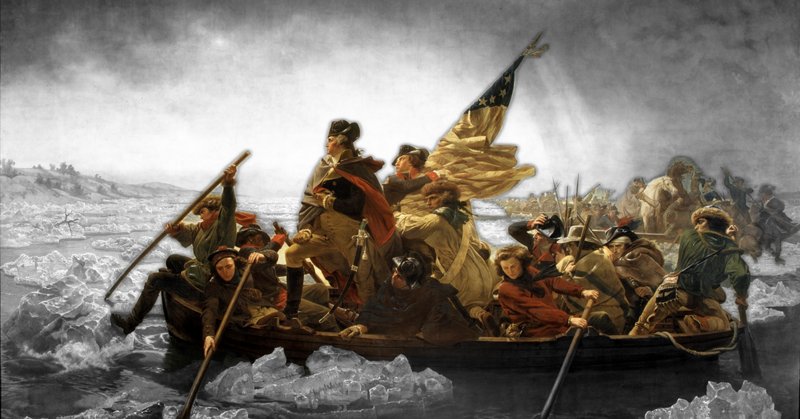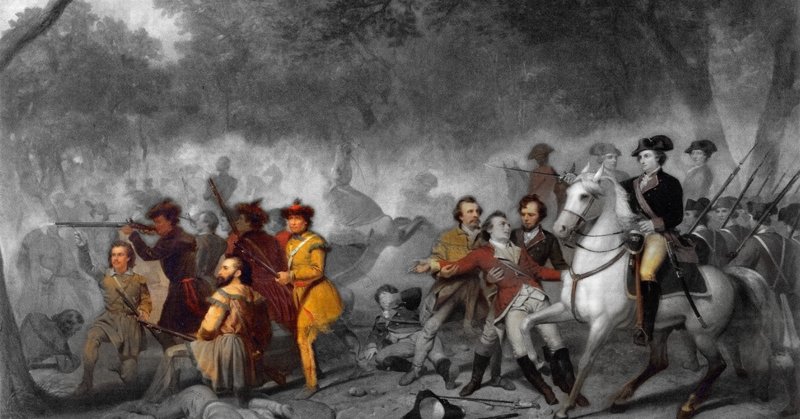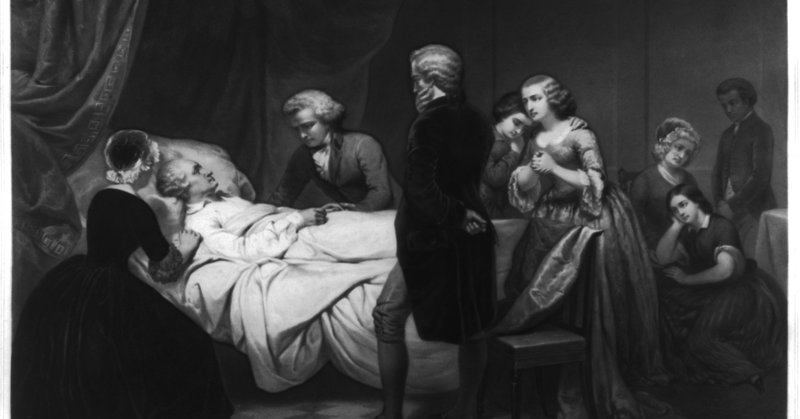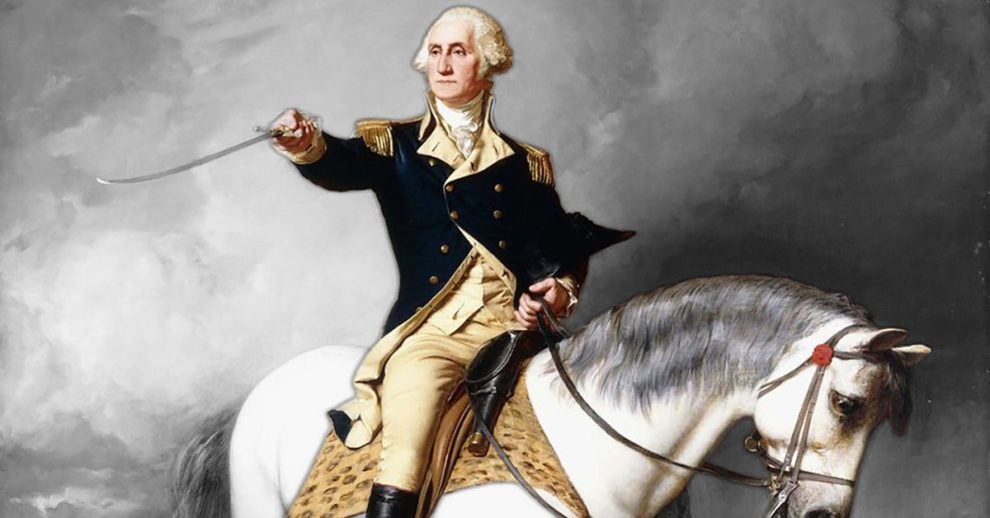George Washington was born on February 22, 1732, in Westmoreland County, Virginia, to Augustine and Mary Ball Washington. Growing up on a plantation, he received only a modest formal education but quickly developed a reputation for leadership and discipline. Washington’s military service during the French and Indian War laid the groundwork for his rise to Commander-in-Chief of the Continental Army, where he guided the American colonies to independence. In 1789, he became the first President of the United States, setting lasting precedents for the office. He married Martha Custis, a wealthy widow, and while he had no biological children, he helped raise her two from her previous marriage. Revered for his character and leadership, Washington’s life blended military valor, political foresight, and personal sacrifice, earning him the enduring title of the “Father of His Country.”
Master of Tactical Retreats

1. George Washington, known for his strategic acumen, lost as many battles as he won. However, he mastered the art of the tactical retreat, accepting temporary defeats to achieve the ultimate goal of defeating the British armies in the Thirteen Colonies.
2. Before signing the Constitution, George Washington ran up a significant tab of $17,253. The attendees, totaling only 55 people, consumed 60 bottles of claret, 54 bottles of Madeira, 22 bottles of porter ale, 8 bottles of hard cider, 12 jugs of beer, and 7 large bowls of punch.
3. George Washington was the only U.S. president who did not belong to a political party. The founding fathers, including Alexander Hamilton and James Madison, shared his concerns about political factions. They feared that political parties could lead to divisions that might undermine the unity of the young nation.
4. Congress voted to pay George Washington $25,000 annually during his presidency. Although he initially declined the salary, he eventually accepted it. Washington understood that refusing the salary might set a precedent that only wealthy individuals could afford to serve as president.
5. To set a lasting precedent for the office, George Washington chose the title “Mr. President.” He rejected the Senate’s proposed titles, such as “His Excellency” or “His Highness the President.”
6. In 1794, George Washington signed the Slave Trade Act, which banned U.S. ships from participating in the Atlantic Slave Trade and prohibited the exportation of slaves for foreign sale. This was in spite of his history as a slave owner, and despite owning 60,000 acres and 300 slaves, Washington had to borrow money to attend his presidential inauguration in New York City. Further in his life, in his will, he directed the emancipation of all his enslaved people after Martha Washington’s death, leading to their freedom on January 1, 1801.
7. George Washington was an imposing figure, standing over 6 feet tall and weighing 225 pounds, while the average man at the time was only 5’6″. Unlike many of his contemporaries, he never wore a powdered wig. Instead, Washington powdered his natural red hair.
8. After George Washington read the Declaration of Independence on July 9, 1776, the crowd was so inspired that they toppled the statue of King George III. They decapitated the statue and melted its body to make bullets. Eventually, the statue’s head made its way back to England.
9. The Founding Fathers had a notable fondness for ice cream. Thomas Jefferson even crafted an 18-step vanilla ice cream recipe, now housed in the Library of Congress. In the summer of 1790, George Washington reportedly spent $200 on ice cream.
10. Early in the Revolutionary War, there was a plot to kill or kidnap George Washington. The conspirators were members of Washington’s Life Guards, similar to today’s Secret Service. Thomas Hickey, one of the traitors, became the first person executed for treason in the United States, in front of 20,000 people.
Washington’s Canine Ceasefire

11. During the Revolutionary War, George Washington once ordered a ceasefire to return a lost dog to its owner, British General Sir William Howe. Soldiers found the dog wandering the battlefield. They fed and cleaned it before returning it to Howe.
12. George Washington followed a flexitarian diet, primarily consisting of vegetables and milk, with minimal red meat. He also ensured his army had access to vegetables, emphasizing their importance in their diet. Washington’s culinary preferences also included hoecakes, a type of cornbread pancake, and he had a personal recipe for eggnog featuring brandy, rye whiskey, Jamaican rum, and sherry wine.
13. George Washington declined a third presidential term because he believed dying in office could imply a lifetime appointment. His decision to retire set the precedent for a two-term limit for U.S. presidents. This precedent remained unbroken until Franklin D. Roosevelt’s four-term presidency.
14. George Washington prevented a military coup over unpaid wages by donning glasses to read a letter from Congress, revealing his near blindness in service to his country. His emotional appeal moved his officers to tears, leading them to compromise.
15. George Washington only left the present-day United States once in his life when he traveled to Barbados with his brother Lawrence in 1751.
16. Thanksgiving’s date wasn’t fixed until 1941, as U.S. presidents previously chose the date. In 1789, George Washington declared the first national Thanksgiving. However, Thomas Jefferson, during his term, refused to observe it, deeming it too religious.
17. George Washington had no biological children, but he was a loving father to his stepchildren, John and Martha Custis.
18. Both George Washington and Benjamin Franklin disagreed with the property destruction caused by the Boston Tea Party. Franklin even offered to reimburse the British for the tea.
19. George Washington was the first American mule breeder. However, his first donkey had a low libido. After careful study, Washington discovered that his donkey performed successfully with female horses when it had a clear view of two female donkeys together.
20. George Washington suffered from taphephobia, the fear of being buried alive. He insisted on being placed in a morgue three days after his death to ensure he wasn’t mistakenly buried alive.
Washington’s Fatal Bloodletting

21. In 1799, George Washington’s doctors attempted to treat his epiglottitis, an inflammation of the throat, by bloodletting. Over the course of twelve hours, they drained nearly 40% of his blood. Unfortunately, this treatment led to his death just hours later.
22. When George Washington passed away in 1799, the British Royal Navy lowered their flags to half-mast in his honor. The London Morning Chronicle remarked on his character, stating that history offers few figures worthy of such admiration. Additionally, Napoleon ordered ten days of national mourning in France. Interestingly, Washington had allegedly declared he would never set foot on English soil ever, so when London erected a statue of him, they placed American soil beneath it to honor his wish.
23. The U.S. Capitol was initially designed to house George Washington’s tomb for public display. Both houses of Congress passed bills for his burial there, and his wife, Martha Washington, consented. However, due to various delays, the plan became viable only by 1830. After an attempted theft of his head, the project was ultimately canceled. There is also a Greek-style statue of Washington, depicting him bare-chested and muscular, that is housed at the Smithsonian.
24. Present-day Washington State was originally named “Columbia.” However, Congress changed the name to “Washington” to honor George Washington and avoid confusion with the nation’s capital, the District of Columbia.
25. By law, no United States officer can outrank George Washington. In 1976, he was posthumously promoted to the rank of Six-Star General, officially titled “General of the Armies of the United States.” This unique honor ensures his perpetual superiority in military rank.














Add Comment